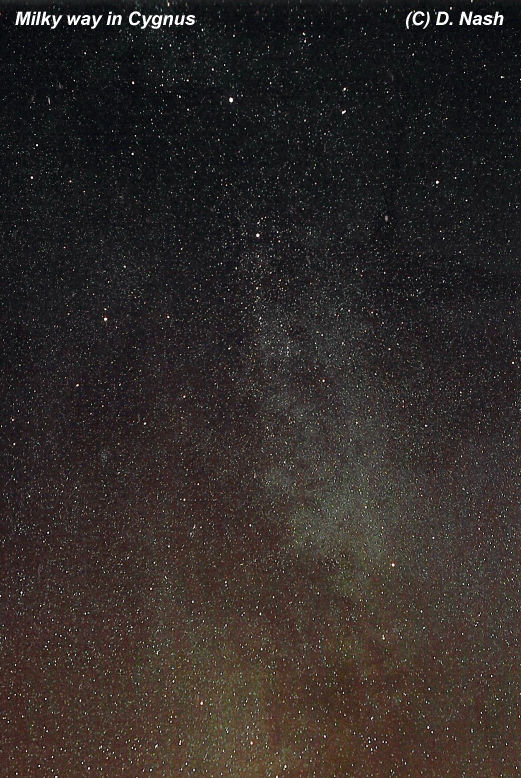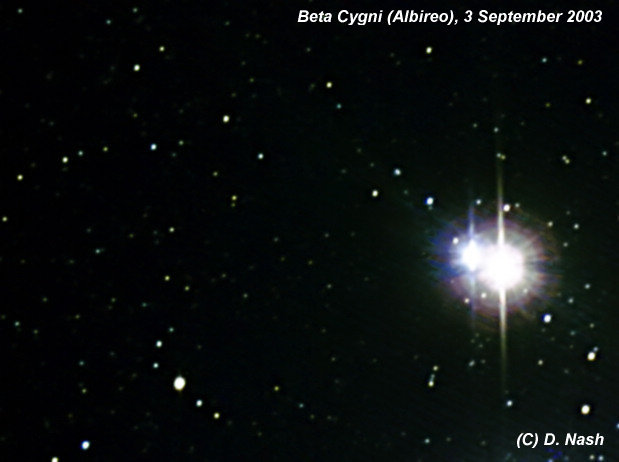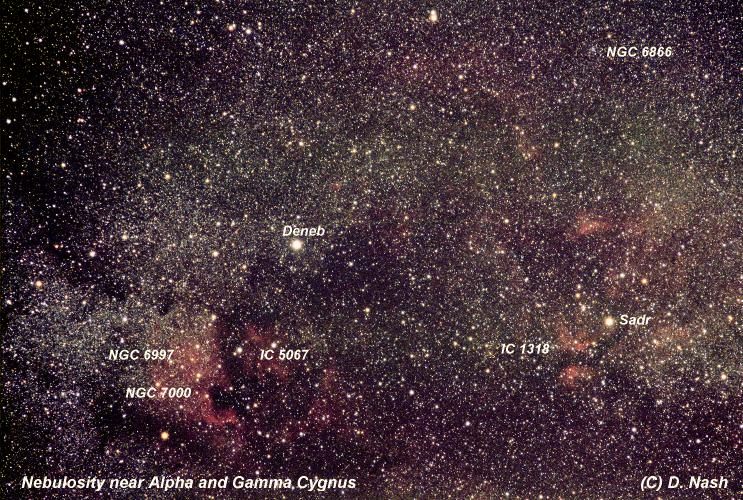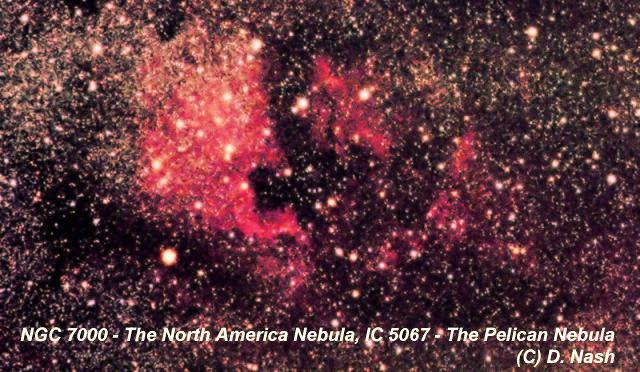| Home | ||||||
| Cygnus | ||||||
| HOME Best Lunar Planets Deepsky Misc Equipment Techniques Links |
| Galaxies Nebulae Star Clusters Constellations Multiple Stars |
| The constellation of Cygnus (The Swan) is one of the most interesting in the sky. It has several double stars, asterisms, and deep-sky objects.
This page shows some interesting features I have captured in Cygnus. |
| Move the mouse over the picture for labels | |

|
|
|
Here is the constellation of Cygnus, high overhead in the middle of the summer, with the milky way running right through it. This picture shows why this constellation is sometimes known as "the Northern Cross". Also in this picture is a rather amusing asterism (group of unrelated stars) known as Brocchi's Cluster, or for reasons made obvious when you see its shape, "The Coathanger", an ideal binocular object. |
|
| to top | home |

|
|
| Beta Cygni (Albireo), the head of the swan Cygnus, is one of the nicest double stars in the sky. It forms a beautiful blue and yellow pair, seen here at prime focus of the 216mm f5 Newtonian. This picture was created from a stack of 8 45-second exposures with the modified QC3000. Click the picture to close in and see the 34 arc-seconds separated pair captured at a shorter exposure, with the unmodified ToUcam, through a 2x Barlow lens. | |
| to top | home |

|
|
|
Alpha Cygni (Deneb) and Gamma (Sadr) are not only two of the brightest stars in the constellation, but are surrounded by some of the most spectacular areas of nebulosity in the summer sky. This film picture has captured many of the eye-catching sights around these two stars. Some of the main objects you can see include NGC 7000, the North America nebula; NCG 6997, the cluster of stars overlaying the nebula; IC 5067, known as the Pelican nebula; IC 1318, sometimes known as the Butterfly nebula although it also includes the wider area and can be called simply "nebulosity around gamma Cygni". Finally, I have labelled the open cluster NGC 6866 near the top-right of the picture, and you can see that in addition to the named nebulae the whole area glows with more clouds of gas, the rich milky way starfield providing a fine backdrop. This SLR picture was taken with a 135mm lens at f/4.0. The exposure was 15 minutes on Fuji Provia 400F film, unguided, with the camera mounted "piggy-back" on my telescope aboard the Vixen SP mount. Clich the image or HERE for a big version (1280 pixels across) or HERE for a slightly smaller one (1000 pixels). | |
| to top | home |

|
|
| NGC 7000 and IC 5067 are two of the brighter areas of nebulosity close to Deneb in Cygnus. Here they can be seen surrounded by milky way stars and with numerous other named objects. This is a detail from the picture above, with the colours adjusted to bring out the redness of the glowing Hydrogen that forms the nebulosity. | |
| to top | home |

|
|
|
Here is another film picture showing the whole of the constellation. This one was using Fuji Provia 400F film like the nebula pictures above, but used a 50mm film to get a wider field of view. It shows just how much nebulosity is in the constellation of Cygnus. In addition to NGC 7000, IC 5067, and IC 1318, many more red areas can be seen including a trace of the veil nebula NGC 6992 half way down the left hand side.
|
|
| to top | home |
 |
|
| All text and images copyright and may not be used without permission |
|